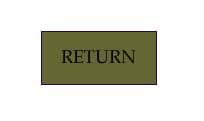|
MICHAEL
BURGHERS (1653-1727)
Prolific topographical and portrait engraver and artist.
Born in Amsterdam,
Worked in Utrecht.
Came to England after Louis XIV’s capture of the City
1676 first of a series of prints of landscape abbeys and ruins.
The plates are largely
for Robert Plot’s Natural History of Staffordshire
(1686) - hence the initial R.P (LLD). His engraving style is often criticised
as dry and mechanical by traditional observers, but these characteristics
are his strengths and triumphs. The structures as exist in space are
studied with exactitude and realised in impeccable drawing of the articulation
of architectural blocks. This level of clarity is usually associated
with Manuals of Perspective. He will here devote much of the composition
to the vastness of the sky with entertaining, sometimes anthropomorpchic
clouds in which floats an extravagant cartouche with dedication.

Look
at the third print, Fisherwick.
Consult
also the detail towards the foot of the previous screen.
Michael Burghers
combines fastidious brickwork with the contrasts provided by the tiles
of the roof. The variety of decoration given to the chimney shafts
is offset against the parallel hatching of the sky. The windows are
of six lights with diamond panes. Only in the circular projecting
bay does his control of perspective slacken with an inadvertent bulginess
and severe crisis in the courses of brickwork around the window openings.
He has a developed
language of depicting grass and other natural growth without suggesting
boredom and repetition. In a high resolution scan, the effects are
not dissimilar from Van Gogh at Arles. He rejoices in the variety
of chimney and the curious cut of the serrated pots. Look how he lovingly
details the twists of the downpipe where spillage may easily have
caused strong growth in the bushes beneath. The stately figure (perhaps
The Hon Viscount John Massereen[e] himself) with a well-turned boot
and a sturdy calf adopts a mysterious gesture across the heart which,
with the floppy hat, might suggest a fashionable pose of Melancholia
(see the Tate Gallery's Portrait of Brooke Boothby by
Joseph Wright of Derby.
The houses are seen as an integral part of the landscape which is
realised sometimes in eccentric detail. Figures have a clear role
(beyond staffage) in the compositions, seemingly undertaking some
mysterious role not unlike Peter Greenaway’s film The Draftsman’s
Contract. They genuflect, they pause to return our gaze, they slip
silently into the doorways. Burghers is terrific at fences and pallisades
and mathematical strips of demarcation. In the Fisherwick image [detail]
the white picket fence is straight out of BLUE VELVET.The fencing
either side of the heraldic door has a curious contrast, the odd articulation
to the right cpped with a neatly observed ball.
It would not be
surprising to discover that the prospects were recorded with the use
of an artist's frame e.g. P.Le Dubreuil, La Perspective pratique,
Paris, 1642, here the English edition translated by E.Chambers,
undated, c1730.
THE
PLATES
1. Robert Lord Ferrers of Chartley
Chartley as John Leland calls it
Chartley Manor Place
near Stafford
Chartley Manor is now a bed and Breakfast establishment.
http://www.chartleymanor.co.uk/
2. Sir Walter
Bagot (1644 - 1704) W by N prospect
of Blithfield Hall, Staffordshire.
“taken from the tarras (terrace) in the garden”
http://lordbramhall.co.uk/
Brian Bramhall
kindly tells me that "Blithfield Hall does still exist and
is still occupied by Nancy Lady BAGOT, now in her 80's. Walter BAGOT
was my 9XG Uncle, his sister, Lettice, being my 9XG Grandmother.
A large part of the Hall has been turned into apartments and most
of the park is now the Blithfield Reservoir. The BAGOT Goats still
roam the land."

photo
courtesy of Lord Bramhall.
3. John Visc
Massareene Baron of Loch Neagh
Privy Councillors of Ireland
SSE prospect of his Lordship’s seat at Fisherwick
plainly not Staffordshire.
4. Rowland Okeover of Okeover
ancient seat at Okeover, Staffordshire.
5. Edwin Skrymsher (1633 - 1689)
of Aqualate House
Aqualate in Forton, Staffordshire.
6. Lady Lane Lady Gerards Baroness Gerard
of Gerards Bromley, Sandon Hall near Stafford.
ESE prospect
of the Hall
|


